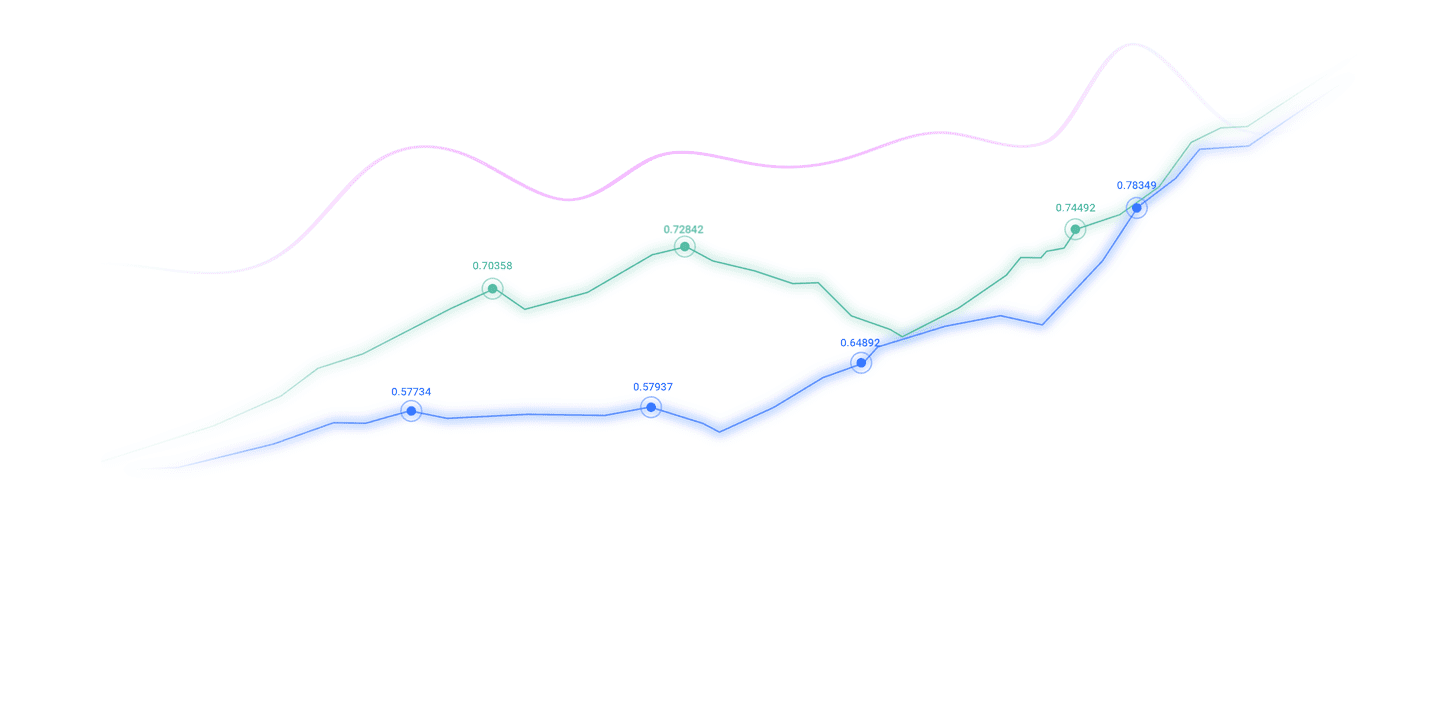Trusted by over 15 Million Traders
The Most Awarded Broker
for a Reason
CATEGORIES
News
- 8.13 Analysis of the latest market trends of gold and crude oil and today's excl
- US and Japan reach trade agreement, market sentiment eases
- Gold may start a phased trend
- The dollar index is weak, the market is waiting for Powell to speak
- Gold is now priced at 3367 in the morning session and is directly short!
market analysis
The U.S. dollar index continues to fall as the U.S. government reopens
Wonderful introduction:
The breeze in one's sleeves is the happiness of an honest man, a prosperous business is the happiness of a businessman, punishing evil and hoeing an adulterer is the happiness of a knight, being good in character and learning is the happiness of a student, helping those in need and those in need is the happiness of a good person, sowing in spring and harvesting in autumn is the happiness of farmers.
Hello everyone, today XM Forex will bring you "[XM Forex]: The U.S. dollar index continues to decline, and the U.S. government reopens." Hope this helps you! Original content is as follows:
In early trading in Asia on November 14, spot gold was trading around US$4,180 per ounce. The price of gold fell back on Wednesday after hitting a three-week high of US$4,244.96 per ounce, giving up early gains that may have boosted expectations for an interest rate cut after the US government reopened. Although the market expects that the US government will release economic data showing a weak labor market after the reopening, which may push the Federal Reserve to cut interest rates in December. However, as Federal Reserve policymakers have recently expressed caution about further interest rate cuts, market sentiment has quickly turned; U.S. crude oil traded around $58.89 per barrel, and oil prices were stable on Wednesday as the market weighed continued concerns about global oversupply and possible supply disruptions caused by sanctions on Russia's Lukoil.
As the U.S. government ended its historic shutdown, the U.S. dollar came under pressure on Thursday, with the U.S. dollar index falling 0.35% to 99.14. The euro rose 0.4% to $1.1638 against the U.S. dollar, hitting a new high since October 29. Traders are assessing the long-term impact of the shutdown on the dollar's credibility while awaiting the release of a backlog of economic data.
Market expectations for the Federal Reserve to cut interest rates in December have dropped below 50%, but this shift has not boosted the dollar. Juan Perez, head of trading at MonexUSA, pointed out: "Although the shutdown is over, how long will it take for us to return to normal? How long will it take for us to see data? This is still unknown." White House economic adviser Hassett confirmed that the October employment report will be released, but the report will not include unemployment data.
There are clear differences within the Federal Reserve on the policy path: San Francisco Fed President Daly is open to December decision-making; Minneapolis Fed President Kashkari sees "mixed" economic signals; Cleveland Fed President Hammaker hinted against the recentSt. Louis Fed President Mussallem believes there is limited room for further easing.
European officials are discussing establishing a U.S. dollar fund pool to replace the Federal Reserve to reduce dependence on the United States. The yen continues to weaken, falling to its lowest level against the euro since 1999. Despite the "verbal warning" from Japan's Finance Minister, traders expect the Bank of Japan to raise interest rates in December with only a 24% chance. Sterling unexpectedly rose against a backdrop of economic stagnation, while the Australian dollar gave up gains after boosting jobs data.
The short-term trend of the US dollar will depend on the quality of upcoming economic data and the clarity of the Federal Reserve's policy path. The statistical gaps caused by the government shutdown may continue to affect the market's judgment on the health of the U.S. economy and bring uncertainty to exchange rate fluctuations.
Asian Markets
New Zealand's manufacturing industry improved further in October, with the New Zealand Business Purchasing Managers' Index rising from 50.1 to 51.4, the fourth consecutive month above 50. While still below the long-term average of 52.4, the industry is currently experiencing its most sustained expansion in three years, suggesting the worst of the downturn may be over.
The details are encouraging: Production increased from 50.5 to 52.0. New orders jumped to 54.9 from 50.5, the fastest pace of growth since August 2022 and a key sign that demand conditions are strengthening. Employment remains in contraction at 48.1, up from 47.7, but even that segment has stabilized after six months of declines.
BusinessNZ's Catherine Beard said October had brought "more signs of life" after months of stagnation. The share of negative respondents fell from 60.2% to 54.1%, with many xmxyly.companies reporting improved orders, seasonal demand, new customers and productivity gains driven by process improvements and automation.
European market
European industrial production increased by only 0.2% month-on-month in September, significantly lower than the expected 0.8%. The modest increase reflected a mix of industry dynamics - output increased in intermediate goods (+0.3%), capital goods (+0.3%) and energy (+1.2%), but fell in consumer durables (-0.5%) and consumer non-durables (-2.6%).
Across the EU, output performed better, rising 0.8% month-on-month, driven by strong growth in Denmark (+7.2%), Sweden (+5.3%) and Greece (+4.8%). However, sharp contractions in Ireland (-9.4%), Luxembourg (-5.7%) and Malta (-1.7%) highlighted the fragmented nature.
The British economy barely grew in the third quarter, with GDP growing just 0.1% quarter-on-quarter, below expectations of 0.2%, fueling concerns about stagnation due to cooling demand. The latest data showed that services output increased by 0.2% month-on-month and construction increased by 0.1%, while the production sector contracted -0..5%, offsetting smaller gains elsewhere. Real GDP per capita was flat, highlighting the lack of meaningful growth in living standards.
Monthly data paints a softer picture. Following zero growth in August (revised from +0.1%) and a contraction of -0.1% in July, GDP fell by -0.1% month-on-month in September, which was less than expected to be flat. The decline was due to a -2.0% month-on-month decrease in production as the automotive manufacturing industry fell sharply -28.6%, reducing overall GDP by 0.17 percentage points. In contrast, the services and construction industries both grew slightly by 0.2%.
U.S. market
San Francisco Fed President Mary Daly said that the Federal Open Market xmxyly.committee meeting on December 9-10 is still a real live decision, and said that "it is too early to say absolutely no interest rate cut or absolute rate cut." Daley stressed that she was "keeping an open mind" and had not yet reached a final opinion.
While Daley reiterated that the overall direction of policy is downward, she cautioned that the exact timing of next steps depends on incoming data. The recent acceleration in services sector inflation xmxyly.complicates the picture as the Federal Reserve's 50 basis point interest rate cut earlier this year helped stabilize the labor market by cooling wage pressures and supporting employment demand.
Daly said policymakers must "gather more information" before making any decisions in December, noting that the Fed faces risks on both sides of its dual mandate.
Cleveland Fed President Beth Hammack said she would take a firmer stance against further interest rate cuts. In an interview with MarketWatch, she expressed opposition to further easing unless the economic outlook worsened and warned that markets may have misunderstood the Fed's tolerance for inflation.
Hamaker said some investors now believe the Fed may quietly accept an inflation rate of "just under 3%," calling the idea a threat to the central bank's credibility. While she continues to monitor the labor market, Hammack said she sees little risk of a recession.
Looking ahead, she expects the economy to strengthen in 2026, with businesses likely to increase investment amid loose credit conditions and support from the stock market. "At this point, I don't think there's anything monetary policy can do," she said.
The above content is all about "[XM Foreign Exchange]: The U.S. dollar index continues to decline, and the U.S. government reopens". It is carefully xmxyly.compiled and edited by the editor of XM Foreign Exchange. I hope it will be helpful to your trading! Thanks for the support!
Live in the present and don’t waste your present life by missing the past or looking forward to the future.
Disclaimers: XM Group only provides execution services and access permissions for online trading platforms, and allows individuals to view and/or use the website or the content provided on the website, but has no intention of making any changes or extensions, nor will it change or extend its services and access permissions. All access and usage permissions will be subject to the following terms and conditions: (i) Terms and conditions; (ii) Risk warning; And (iii) a complete disclaimer. Please note that all information provided on the website is for general informational purposes only. In addition, the content of all XM online trading platforms does not constitute, and cannot be used for any unauthorized financial market trading invitations and/or invitations. Financial market transactions pose significant risks to your investment capital.
All materials published on online trading platforms are only intended for educational/informational purposes and do not include or should be considered for financial, investment tax, or trading related consulting and advice, or transaction price records, or any financial product or non invitation related trading offers or invitations.
All content provided by XM and third-party suppliers on this website, including opinions, news, research, analysis, prices, other information, and third-party website links, remains unchanged and is provided as general market commentary rather than investment advice. All materials published on online trading platforms are only for educational/informational purposes and do not include or should be considered as applicable to financial, investment tax, or trading related advice and recommendations, or transaction price records, or any financial product or non invitation related financial offers or invitations. Please ensure that you have read and fully understood the information on XM's non independent investment research tips and risk warnings. For more details, please click here


































































































